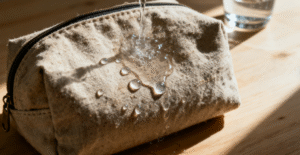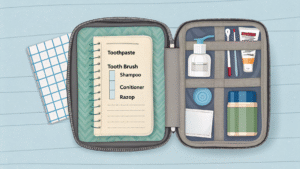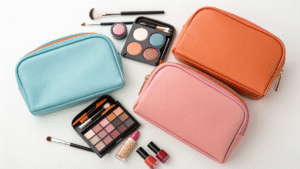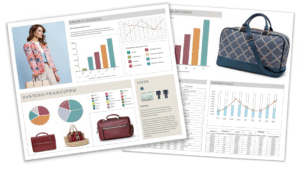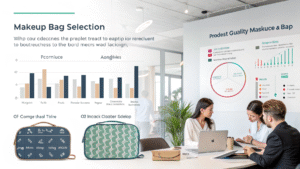Which country produces the best quality products?
Product quality varies significantly across countries based on manufacturing standards, regulatory oversight, and industry specialization affecting consumer satisfaction and market reputation. Poor quality assessment leads to suboptimal purchasing decisions and potential safety risks for consumers and businesses.
Switzerland, Germany, and Japan lead global product quality through precision manufacturing, strict standards, and continuous innovation, while South Korea excels in cosmetic quality specifically. Q&N observes transparent and semi-transparent cosmetic bag designs remaining popular in 2025 for convenient visibility and fashionable appeal.
global product quality by country
After manufacturing cosmetic accessories for global markets over 15 years through our Q&N operations, I've observed distinct quality patterns across different countries and regions. The continued popularity of transparent and semi-transparent cosmetic bag designs in 2025 reflects consumers' appreciation for both functionality and aesthetic appeal, demonstrating how quality encompasses both performance and visual design elements.
Which country imports the most cosmetics?
Understanding cosmetic import patterns reveals market opportunities, consumer preferences, and economic factors driving global beauty industry growth. Accurate import data helps manufacturers identify target markets and distribution strategies for optimal business development.
United States leads cosmetic imports globally with over $8 billion annually, followed by Germany and United Kingdom reflecting strong consumer demand and purchasing power. Q&N supports global cosmetic distribution with transparent and semi-transparent bag designs popular in 2025 providing convenient product visibility and modern aesthetic appeal.
top cosmetic importing countries
United States dominates global cosmetic imports through massive consumer market, high disposable income, and diverse demographic preferences driving continuous demand growth. Beauty industry size exceeds $80 billion domestically with imports supplementing domestic production. Consumer willingness to try international brands creates opportunities for global manufacturers. E-commerce growth facilitates direct import relationships and niche product access.
Germany represents the largest European cosmetic import market through strong economy, quality preferences, and central distribution location serving broader European markets. Regulatory compliance with EU standards ensures product safety and consumer confidence. Premium positioning preferences support higher-value imports and luxury brands. Central European location facilitates distribution throughout the continent.
Our Q&N experience serving cosmetic importers reveals the importance of packaging and presentation in international markets. Transparent and semi-transparent cosmetic bag designs provide customs visibility while maintaining fashionable appeal. Modern consumers appreciate seeing product contents while maintaining organized storage solutions.
United Kingdom maintains significant cosmetic import volume despite Brexit complications through established beauty culture and international brand preferences. London serves as European beauty hub influencing trends and brand development. Strong pound historically supported premium import purchasing power. Beauty subscription services drive import demand for diverse international products.
France imports substantial cosmetic volumes despite being major producer reflecting consumer preference for international variety and specialized products. Luxury market sophistication demands diverse product offerings beyond domestic capabilities. Consumer willingness to pay premium prices supports high-value imports. Fashion industry connection drives cosmetic trend adoption and international sourcing.
Japan demonstrates strong cosmetic import growth particularly for Western brands and specialized ingredients not available domestically. Consumer sophistication drives demand for innovative formulations and international beauty trends. Aging population increases skincare and anti-aging product imports. Premium positioning preferences support luxury import market development.
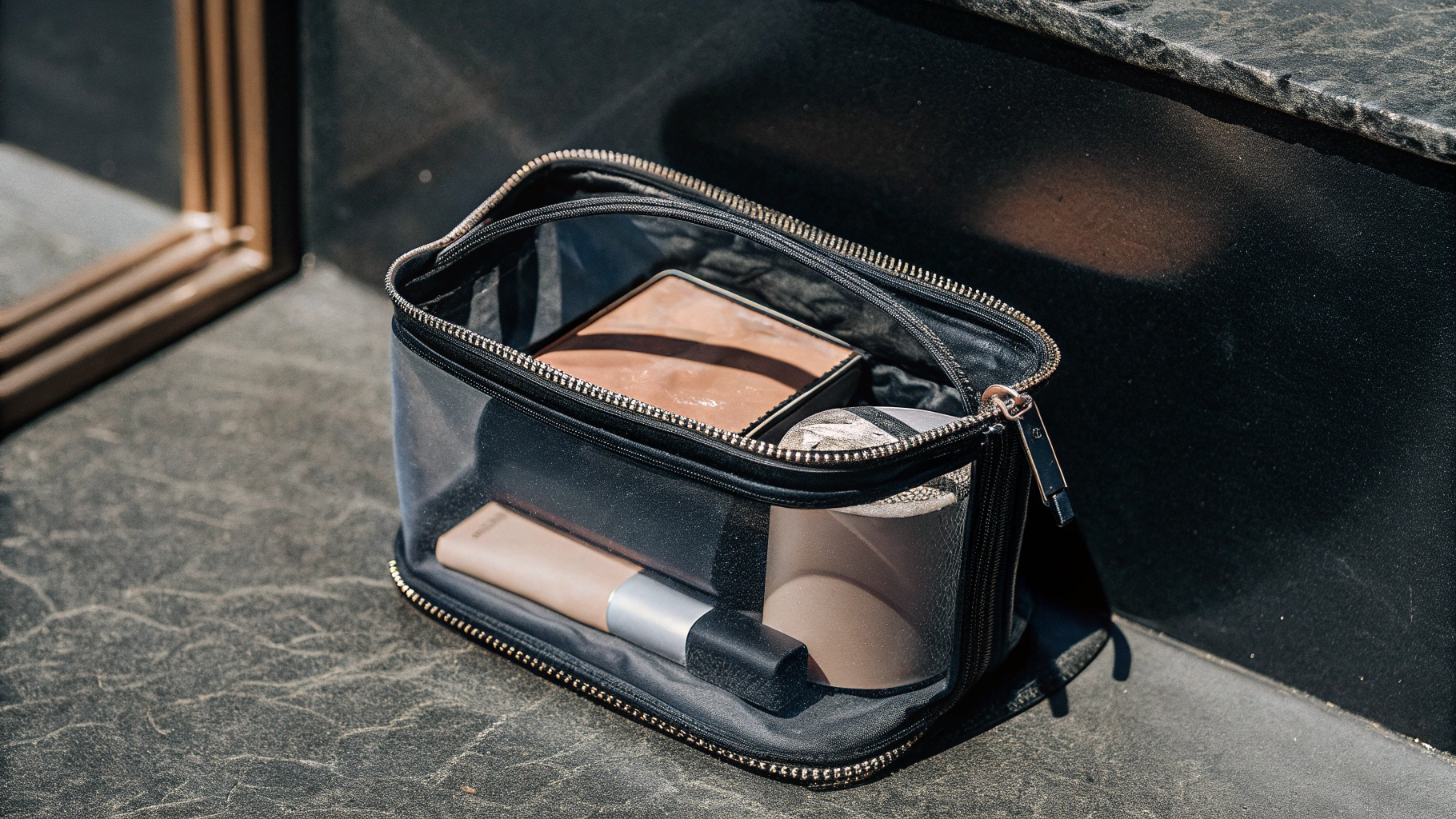
China represents rapidly growing cosmetic import market driven by rising disposable income, urbanization, and international brand preference among younger consumers. Middle class expansion creates massive market opportunities for international brands. Social media influence drives awareness and demand for foreign cosmetic products. Government regulatory changes facilitate easier import procedures and market access.
Canada maintains steady cosmetic import volume serving diverse population with varied cultural beauty preferences requiring international product variety. Proximity to USA influences beauty trends and product preferences. Bilingual market requires both English and French product offerings. Climate variations create demand for specialized seasonal cosmetic products.
Australia imports significant cosmetic volumes due to geographic isolation from major production centers and strong consumer demand for international brands. High disposable income supports premium import purchasing decisions. UV protection focus creates demand for specialized sun care products. Natural beauty trend drives import demand for organic and sustainable cosmetic options.
South Korea imports growing cosmetic volumes despite being major producer reflecting consumer demand for international variety and luxury positioning. K-beauty export success creates domestic appreciation for international beauty standards. Consumer willingness to experiment drives demand for global beauty trends. Premium positioning preferences support luxury import market segments.
Import trend analysis reveals shifting patterns based on economic conditions, regulatory changes, and consumer preference evolution affecting market opportunities. Digital commerce growth facilitates direct import relationships bypassing traditional distribution channels. Sustainability concerns influence import decisions favoring environmentally responsible brands. Regulatory harmonization reduces import barriers and compliance costs.
| Import Ranking | Country | Annual Import Value | Key Import Categories | Market Characteristics |
|---|---|---|---|---|
| 1 | United States | $8+ billion | Skincare, luxury brands | Large diverse market |
| 2 | Germany | $3+ billion | Premium products, natural cosmetics | Quality-focused consumers |
| 3 | United Kingdom | $2.5+ billion | Luxury brands, innovation | Established beauty culture |
| 4 | France | $2+ billion | Specialized products, ingredients | Sophisticated preferences |
| 5 | Japan | $1.8+ billion | Western brands, anti-aging | Innovation-seeking consumers |
| 6 | China | $1.5+ billion | International brands, luxury | Rapidly growing market |
Which country has the safest cosmetics?
Cosmetic safety standards vary significantly across countries based on regulatory frameworks, testing requirements, and enforcement mechanisms affecting consumer protection and product reliability. Understanding safety regulations helps consumers make informed choices and manufacturers ensure compliance.
European Union maintains strictest cosmetic safety standards through comprehensive regulations, banned ingredient lists, and mandatory safety assessments, followed by Japan and USA. Q&N supports safe cosmetic storage with transparent and semi-transparent bags popular in 2025 enabling easy product identification and contamination prevention.
cosmetic safety standards by country
European Union leads global cosmetic safety through comprehensive regulatory framework banning over 1,300 potentially harmful ingredients while requiring extensive safety documentation. REACH regulation ensures chemical safety throughout supply chains. Cosmetic Product Safety Report demands thorough safety assessment before market entry. Regular regulatory updates incorporate latest scientific research and safety data.
Japan maintains rigorous cosmetic safety standards through detailed ingredient approval processes and comprehensive testing requirements ensuring consumer protection. Pharmaceutical and Medical Device Agency oversees cosmetic regulation with strict enforcement. Positive list system requires pre-approval for specific ingredients. Manufacturing facility inspection ensures compliance with safety standards.
Our Q&N manufacturing experience reveals how safety considerations extend beyond product formulation to include packaging and storage solutions. Transparent and semi-transparent cosmetic bag designs enable visual inspection for contamination or product degradation. Easy identification prevents accidental misuse and ensures proper product application.
United States enforces cosmetic safety through FDA oversight and post-market surveillance while allowing more industry self-regulation compared to European standards. Voluntary reporting system monitors adverse events and safety concerns. Good Manufacturing Practice guidelines ensure sanitary production conditions. Import inspection prevents unsafe products from entering domestic markets.
South Korea implements comprehensive K-beauty safety standards through ingredient approval processes and manufacturing oversight ensuring export product quality. Korean FDA equivalent regulates cosmetic safety with increasing stringency. Export quality standards meet international requirements and consumer expectations. Innovation focus includes safety testing for new ingredients and formulation techniques.

Canada maintains cosmetic safety through Health Canada regulation requiring pre-market notification and safety substantiation similar to European approaches. Cosmetic ingredient hotlist identifies prohibited and restricted substances. Good Manufacturing Practice requirements ensure production safety standards. Border inspection prevents unsafe imports from entering Canadian markets.
Australia regulates cosmetic safety through Therapeutic Goods Administration with focus on high-risk products and ingredients requiring specialized oversight. Ingredient safety assessment follows international standards and scientific evaluation. Import control measures prevent unsafe products from entering Australian markets. Consumer complaint system monitors post-market safety issues.
China strengthens cosmetic safety regulation through updated laws requiring extensive testing and documentation particularly for imported products. Animal testing requirements create compliance challenges for international brands. Registration system ensures safety evaluation before market entry. Manufacturing facility oversight ensures production standard compliance.
Switzerland maintains high cosmetic safety standards through stringent regulatory framework and quality control systems supporting luxury product reputation. European regulatory alignment ensures comprehensive safety coverage. Manufacturing precision supports consistent safety performance. Consumer protection emphasis drives continuous safety improvement initiatives.
Germany enforces cosmetic safety through comprehensive regulatory framework and industry association guidelines ensuring consumer protection and product reliability. Federal Institute oversight provides scientific safety evaluation. Industry self-regulation supplements government oversight through voluntary standards. Consumer protection advocacy drives continuous safety enhancement efforts.
Safety assessment methodologies evaluate cosmetic safety through various testing approaches and scientific evaluation ensuring comprehensive consumer protection. In-vitro testing methods reduce animal testing while maintaining safety standards. Clinical evaluation provides human safety data under controlled conditions. Post-market surveillance monitors real-world safety performance and adverse events.
| Safety Ranking | Country/Region | Key Safety Features | Banned Ingredients | Testing Requirements |
|---|---|---|---|---|
| 1 | European Union | Comprehensive regulation, 1300+ bans | Most restrictive | Mandatory safety reports |
| 2 | Japan | Positive ingredient list | Strict approval | Comprehensive testing |
| 3 | USA | FDA oversight, GMP | Moderate restrictions | Post-market surveillance |
| 4 | South Korea | K-beauty standards | Growing restrictions | Export quality focus |
| 5 | Canada | Health Canada regulation | EU-aligned bans | Pre-market notification |
| 6 | Australia | TGA oversight | Risk-based approach | High-risk product focus |
Which cosmetic products are most profitable?
Cosmetic profitability varies across product categories based on margin structures, market demand, and competitive dynamics affecting business success and investment returns. Understanding profitability patterns helps entrepreneurs make informed product development and market entry decisions.
Skincare products achieve highest profitability with 40-70% margins through premium positioning and repeat purchases, followed by luxury fragrances and anti-aging treatments. Q&N supports profitable cosmetic presentation with transparent and semi-transparent bags trending in 2025 enhancing product visibility and premium positioning.
most profitable cosmetic product categories
Skincare dominates cosmetic profitability through premium positioning, scientific claims, and consumer willingness to invest in long-term benefits creating sustainable high-margin business opportunities. Anti-aging products command highest margins through emotional benefits and perceived efficacy. Serums and treatments provide concentrated active ingredients justifying premium pricing. Specialized skincare addresses specific concerns enabling niche positioning and customer loyalty.
Luxury fragrances maintain exceptional profitability through emotional positioning, brand prestige, and high margin structures despite lower purchase frequency. Designer collaborations create exclusive positioning and premium pricing opportunities. Limited editions generate excitement and urgency driving sales volumes. Brand licensing provides additional revenue streams without manufacturing investment requirements.
Our Q&N observations serving profitable cosmetic companies reveal the importance of premium presentation in supporting high-margin positioning. Transparent and semi-transparent cosmetic bag designs enhance product visibility while maintaining sophisticated aesthetic appeal. Professional presentation supports consumer confidence in premium pricing and quality perception.
Professional makeup products achieve strong profitability through specialized positioning, quality requirements, and industry customer loyalty creating stable high-margin business opportunities. Film and television industry demands drive premium pricing for specialized products. Professional artist loyalty provides repeat business and word-of-mouth marketing. Training and education services create additional revenue streams and customer relationships.
Men's grooming represents rapidly growing profitable segment through limited competition, premium positioning, and increasing consumer acceptance of male beauty spending. Beard care products provide high margins through specialized formulations and niche positioning. Anti-aging skincare for men captures growing market with premium pricing potential. Luxury positioning reduces price sensitivity and increases margin opportunities.
Organic and natural cosmetics command premium pricing through clean beauty positioning and environmental consciousness appealing to health-conscious consumers willing to pay more. Certification requirements create barriers to entry and competitive protection. Ingredient transparency builds consumer trust and loyalty. Sustainable packaging appeals to environmentally conscious consumers.
Color correcting and specialized makeup products achieve high margins through technical expertise and niche positioning serving specific customer needs. Color science knowledge creates competitive barriers and expertise positioning. Problem-solving focus reduces price sensitivity and increases customer loyalty. Professional endorsement supports premium positioning and credibility.
Hair care treatments and specialized products provide profitability through regular usage patterns and premium positioning for damaged or specialty hair needs. Salon professional products command higher margins through expertise positioning. Treatment products justify premium pricing through visible results and ingredient concentration. Specialty formulations serve niche markets with reduced competition.
Eye care and anti-aging treatments achieve premium margins through sensitive area focus and specialized formulation requirements creating customer trust and loyalty. Delicate skin area positioning justifies premium pricing and careful formulation. Visible results create customer satisfaction and repeat purchases. Medical aesthetic positioning supports highest margin opportunities.
Subscription beauty services provide recurring revenue profitability through customer lifetime value optimization and reduced acquisition costs while maintaining engaged customer relationships. Personalization algorithms improve customer satisfaction and retention rates. Bulk purchasing enables cost advantages and exclusive product access. Data collection provides valuable insights for optimization and product development.
Innovation-driven products capture premium margins through patent protection, unique benefits, and first-mover advantages creating temporary monopoly positions. Breakthrough ingredients command premium pricing through exclusivity and proven effectiveness. Technology integration creates differentiation and competitive barriers. Research investment provides long-term competitive advantages and patent protection.
| Product Category | Profit Margin Range | Key Success Factors | Market Characteristics |
|---|---|---|---|
| Premium Skincare | 40-70% | Scientific positioning, efficacy claims | High repeat purchase |
| Luxury Fragrance | 50-80% | Brand prestige, emotional connection | Lower frequency, high value |
| Professional Makeup | 35-60% | Quality requirements, industry loyalty | Specialized market segment |
| Men's Grooming | 30-50% | Growing acceptance, limited competition | Rapidly expanding market |
| Organic/Natural | 25-45% | Clean positioning, health consciousness | Premium pricing supported |
| Specialized Treatments | 40-65% | Niche positioning, problem-solving | Reduced price sensitivity |
Conclusion
Product quality leadership varies by specialization with Switzerland and Germany excelling in precision manufacturing, while cosmetic profitability peaks in premium skincare and luxury positioning, supported by Q&N's transparent bag designs trending in 2025.
 Q&N Fashion Factory
Q&N Fashion Factory


